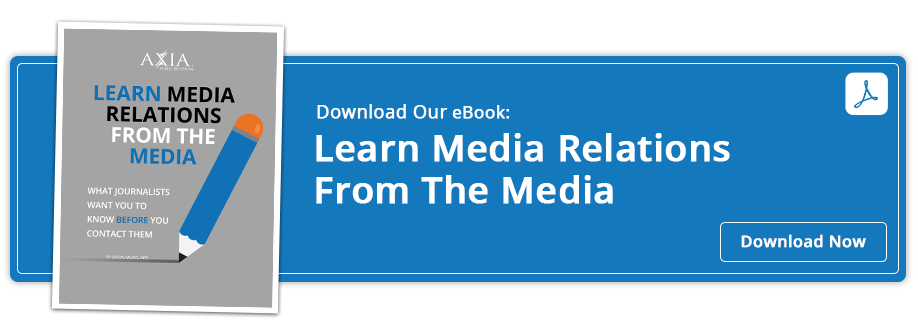 Understanding is the first step toward effectively leveraging
Understanding is the first step toward effectively leveraging
New media professionals enter the industry with an innate passion for keeping people informed – although most probably don’t realize that keeping people informed is now a 24-hour-a-day, 7-day-a-week commitment.
Once limited by time zones and printing press schedules, news reporting has profoundly changed with the onset of digital communication. Most news outlets have switched to 24-hour news cycles to meet the growing need to deliver the most immediate and compelling news at every hour of every day.
Many of us have woken to breaking news that surfaced while we were capturing some much-needed sleep. The thing is, news never sleeps. Skeleton crews of journalists, editors, copy editors, illustrators, graphic designers, photographers and cameramen all remain on duty after normal business hours at every operating news outlet – whether it’s a television station, online news outlet, wire bureau or radio station – poised to cover breaking news, even if that news breaks at 3:45 a.m.
As public relations professionals, our job, too, is deeply entrenched in the news – in fact, we are often the ones making it. With the 24/7 news cycle comes various pros and cons that we, too, must take into consideration as we counsel our clients through breaking news moments or even the run-of-the-mill daily news dissemination.
Pros
-
Media’s undeniable need to fill the news cycle: News staffers require fresh information to plug into websites, social media and RSS feeds, so if you have a good story, share it. Properly crafted, targeted and creatively packaged news will gain media attention – especially when delivered after normal business hours.
-
Immediacy of news dissemination: Since media outlets no longer have to depend on or wait for print press operators, illustrators and others, they can turn out news stories incredibly fast. Some journalists opine that this “quick-turn” news imperils more in-depth, fact-based coverage because it often focuses on delivering exclusively basic facts with limited (if any) supportive information such as quotes, analysis, statistics, etc. Even so, the bottom line is that when stories break, media outlets will publish at least the basic information immediately.
-
Minor news can become major: Given the constant need to fill the cycle with updates and fresh stories, the news media is often hungry for fresh meat. What may seem like minor updates during standard business hours could become big news if shared during off-hours. It’s all in the timing. For example, if one of our clients shares a solid news story at 8:45 p.m., a local television news station can leverage the information for its 10 or 11 p.m. news broadcasts while simultaneously arranging guest appearances on its morning show slot to flesh out further facts and details. Morning news feeds can overflow with the news story, thus generating a comfortable 24-hour kick start.
Cons
-
Only skeleton crews on off-hours: As most media outlets are already operating with smaller staffs than they would wish, many can only afford to operate skeleton crews during off-peak hours. Therefore, after 8:00 p.m., news bureaus are typically staffed with a single news editor who works with stringers, contractors and freelancers as needed. This also means that, if clients have relationships established with beat reporters/editors who are deeply familiar with their background, finances, etc., none of that leverage will be available when communicating news to a new staff reporter after hours.
-
The occasional absence of news: With an absolute pressure to fill websites and social media channels with breaking news, all press outlets are forced into an uncomfortable position: They can either (a) dish the same news over and over again; (b) refresh or repurpose “old” news (add a new photo, quote, fact or detail); or (c) write something new.
When new information, story ideas or breaking news tips aren’t available, the media is forced to share the same news it has already written – to the dismay of followers, fans and viewers alike. Some argue that this repetition has led to apathetic audiences. An alternate approach – repeating the news but adding a new photo or minor tidbit – has the same effect. The most frustrating offense, however, is when news media creates news containing no news value whatsoever, whether it’s the latest and greatest photo borrowed from a celebrity’s Instagram account or an irrelevant “cheating partner” ordeal that’s been making rounds on social media. The disappointing reality is that the media is under so much pressure to produce that, without something useful, cool, creative and newsworthy, it has to reach really deep and winds up grasping at fumes. -
Constant and rapid changes in news: Closely following the argument about apathy is the concern that too much information is causing us to spend even less time understanding and interpreting the news when it is delivered. The theory is that we’re all becoming more complacent and less attentive to the details, whether it’s about health care reform or potential relationships between GMOs and child obesity. The belief is that 24/7 news has forced us all to tune out what was previously critically important (i.e. world news, politics, health concerns) and, instead, focus on less relevant yet more easily digested news bits that have no direct meaning or consequence to our lives (i.e. celebrity relationship statuses).
If you’d like to learn more about how this 24/7 media machine operates, we encourage you to watch Axia Public Relations’ webinar “Confessions of CNN Producers” to better understand how to make your news stand out in front of “The Most Trusted Name in News.”
 Wendy Bulawa Agudelo has more than 15 years of experience in technology, business, consumer and non-profit public relations. In addition to serving on the Massachusetts Down Syndrome Congress PR Task Force, Wendy enjoys cooking and rooting for her favorite New England sports teams.
Wendy Bulawa Agudelo has more than 15 years of experience in technology, business, consumer and non-profit public relations. In addition to serving on the Massachusetts Down Syndrome Congress PR Task Force, Wendy enjoys cooking and rooting for her favorite New England sports teams.
Featured image credit: 123rf.com
Topics: public relations


Comment on This Article